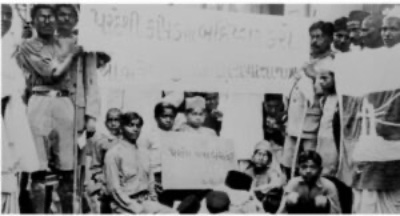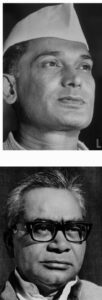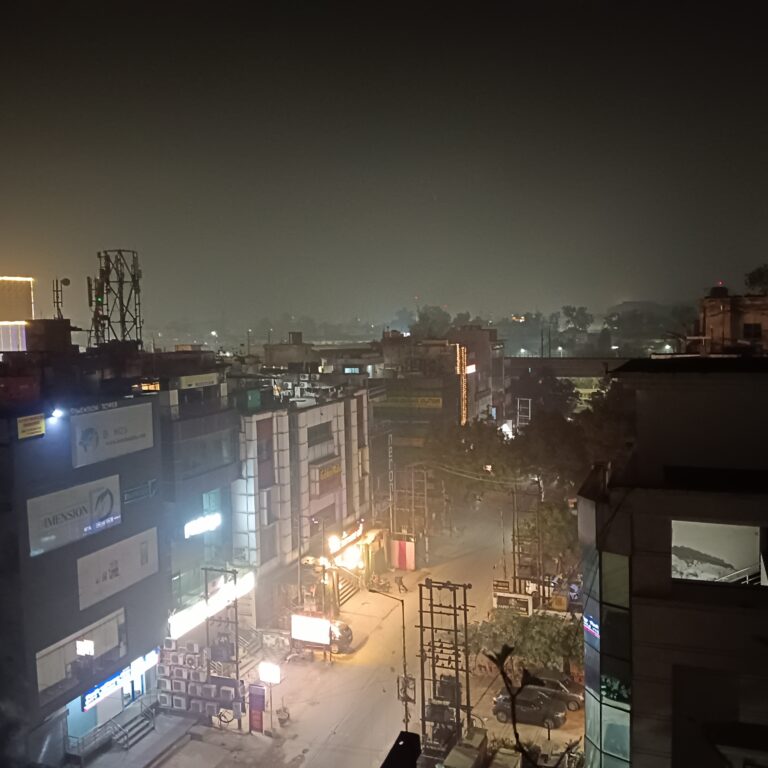
August Kranti or the Quit India Movement, a pivotal chapter in India’s freedom struggle, marked the final and fiercest fight against British colonial rule, showcasing the unwavering resolve of millions of Indians to reclaim their independence, dignity, and honour on the world stage. This day commemorates their sacrifices, courage, and patriotism in the struggle for India’s independence.
August Kranti was led by Mahatma Gandhi and Indian socialist leaders as a final push against British rule. As it commenced on August 9, 1942, the British swiftly responded by arresting all members of the Congress Working Committee, including Mahatma Gandhi, who was placed under house arrest at Aga Khan Palace.
The iconic slogan “Quit India,” which became synonymous with the movement, was coined by Yusuf Meherally, the then mayor of Bombay and a prominent socialist leader. Meherally’s slogan captured the essence of the struggle and was endorsed by Gandhi himself, symbolizing the determination of the Indian people to end British rule.
The consequences of the August Kranti were profound and far-reaching, both in terms of its immediate impact and its lasting legacy on the Indian freedom struggle. Marked by Gandhi’s call to “Do or Die,” which united the nation in a mass protest demanding complete independence, the Quit India Movement became a symbol of India’s unwavering resolve to achieve freedom in the face of fierce opposition and repression. It demonstrated the global implications of India’s fight for freedom, as it unfolded against the backdrop of World War II, with Indian leaders facing the dual challenge of resisting both British colonialism and the rise of fascism.
Despite the non-violent nature of the movement, the British resorted to extreme measures, resulting in the deaths of thousands of people and injuries to 1,630 others. Over 60,000 activists were arrested, but the movement succeeded in uniting the entire country in a shared demand for independence.
Although the movement did not succeed in driving the British out of India, it dealt a severe blow to the British government’s authority and machinery. There was a huge participation of youths in the movements, with students playing a significant role in the resistance. They led protests that resulted in the closure of schools, colleges, and markets in Bombay for over two weeks. By August 10, 1942, the movement had escalated, with attacks directed at government buildings and communication infrastructure. Roads and lanes were blocked, telegraph and telephone wires were cut, and railway lines were tampered with, all to disrupt British control. The police responded with lethal force, firing on twenty-six occasions, which led to the deaths of sixteen people and injuries to fifty-seven others.
The repression that followed August Kranti only strengthened the resolve of the Indian people, leading to widespread demonstrations, strikes, and protests across the country. The movement saw significant participation from various regions, including Uttar Pradesh, Bihar, Bengal, Odisha, Karnataka, Kerala, and Andhra Pradesh, with workers in major cities like Delhi, Lucknow, Kanpur, and Madras playing a crucial role.
In the broader context, the Quit India Movement marked a turning point in India’s struggle for independence, highlighting the limitations of British power and signalling the inevitability of India’s freedom. Despite the internal disagreements within the Congress Party and the challenges posed by the ongoing war, the movement solidified the Indian people’s determination to achieve independence, ultimately leading to the end of colonialism not only in India but also on a global scale.
August Kranti, therefore, holds a special place in the history of India’s fight for freedom, representing the collective will and unyielding spirit of the Indian people. In Banaras, the situation escalated to such an extent that the English army had to be called in to suppress the students of Kashi Vidyapeeth. Across the region, railway tracks and other communication systems were severely damaged as part of the broader resistance efforts.
The Quit India Movement also marked a significant chapter in Bihar’s history, reflecting the intense desire for freedom from British rule. One of the most notable incidents occurred on August 11, 1942, when seven students were shot dead by police while attempting to hoist the Indian flag at the Patna Secretariat.

Socialist leaders played a crucial role in sustaining and guiding August Kranti throughout India, including in Bihar. Figures like Dr. Ram Manohar Lohia, Usha Mehta, and Aruna Asaf Ali were instrumental in establishing secret radio stations that kept the revolutionary spirit alive. The formation of the Azad Dasta in Bihar, led by prominent leaders such as Nityanand Singh, Suraj Narayan Singh, Basawan Singh, Aditya, and others further strengthened the movement. Jayaprakash Narayan, often hailed as a hero of the 1942 movement, maintained communication with freedom fighters through his ‘Address to Freedom Fighters,’ written during his underground days. Leaders like Narayan planned both destructive and constructive activities, including attacks on government officials and recruitment of subversive elements within the police and army, while also maintaining public order and sympathy through the efforts of the Congress Socialist Party (CSP).
Despite the absence of central Congress leadership, the movement thrived under the direction of socialist leaders, demonstrating the effectiveness of local leadership and mass participation. Under Lohia and Narayan, the movement gained momentum. Secret reports from Bihar in 1943 revealed ongoing efforts to sustain and escalate the movement. The arrest and imprisonment of Mahatma Gandhi from August 1942 to May 1944, as a protest against the British blaming Congress and Gandhi for widespread violence, marked a challenging period during which his close associate Mahadev Desai and his wife Kasturba Gandhi passed away.
Gandhi’s fast from February 10 to March 3, 1943, along with mass mobilization and popular protest, eventually compelled the British government to release him on May 6, 1944, as his health deteriorated. This act of defiance boosted the morale of the movement, even as the political landscape in India experienced significant shifts. The Communists, who initially sought to exploit the wartime situation to overthrow British rule, shifted their stance after the Soviet Union joined the Allies, leading to divisions within the nationalist movement. Notably, several political groups, including the Akali Dal, Communist Party, Liberal Party, Unionist Party, Muslim League, Ambedkar’s Scheduled Caste Federation, and Hindu Mahasabha, did not support the Quit India Movement.
The movement was, without a doubt, one of the most powerful in Indian history, as noted by the then Viceroy Lord Linlithgow, who described it as the most serious rebellion since the 1857 uprising. The strategic efforts to paralyze the British administration included general strikes across schools, colleges, government offices, mills, workshops, and markets. In Delhi, the arrest of Congress leaders sparked further arrests and widespread closures of shops in key areas, signalling the widespread impact of the movement.
Under the leadership of figures like Ramnandan Mishra, Jayaprakash Narayan, and others, they played a vital role in galvanizing the masses. The Azad Dasta engaged in guerrilla warfare and sabotage activities, including training students in various skills necessary for resistance. Notably, the younger section of the teaching staff and students from Santiniketan also joined the movement, contributing to acts of sabotage across the Birbhum district.
This nationwide effort underscored the Quit India Movement as a true people’s uprising, uniting various sections of society in the fight for India’s independence.
The protest methodology during the Quit India Movement was firmly rooted in the principle of non-violence, emphasizing that every action taken against the British government should be non-violent yet resolute. The strategy included several key actions: refusing to cooperate with any administration that was not led by the people, closing mills, factories, schools, colleges, and markets until a people’s government was established, and withholding any form of assistance to the British government. Protesters were encouraged to persuade police officers to disobey government orders and to disrupt communication by destroying telephones, and telegraphs, and halting railway services. The goal was to break the administrative machinery of the government through acts of civil disobedience, including picketing government offices, spreading information through messengers, posters, and traditional methods like beating drums, and organizing widespread agitation against British rule.
The movement also called for the closure of all educational institutions until the British government withdrew, intending to take control of these institutions once independence was achieved. Citizens were urged to disobey all government laws and refuse to pay taxes. The “Long Live Revolution” rallying cries symbolized the unwavering commitment to achieving freedom. Negotiations with the British government were to be avoided until Mahatma Gandhi, the leader of the movement, deemed it appropriate. Indian socialists led Baliya, Midnapur, and Sitara to independence from British rule.
Despite differing views within the Indian leadership— such as Dr Ashraf, a prominent politician from Uttar Pradesh, who believed that Pandit Jawaharlal Nehru neither visualized nor approved of the movement— the movement pressed on, with students playing a significant role. Students from across the country, particularly from Banaras Hindu University, were at the forefront of the national struggle, facing police violence, imprisonment, and solitary confinement with remarkable resilience. Their organization within the university paralleled the growing demand for independence, further strengthening the movement.
The All-India Congress Committee’s historic session on August 8, 1942, in Bombay, which approved the Quit India Resolution, declared that it was no longer justified to hold back the nation’s will against an imperialist government. The resolution sanctioned a mass struggle on non-violent lines, under the leadership of Mahatma Gandhi, to assert India’s inalienable right to freedom. Gandhi, encapsulating the spirit of the movement, urged the nation with his mantra: “We shall do or die. We shall either free India or die in the attempt; we shall not live to see the perpetration of our slavery.” This call to action underscored the unwavering determination of the Indian people to achieve independence, no matter the cost.
The events at August Kranti Maidan in Mumbai during the Quit India Movement were marked by intense bravery and tragic violence. On that fateful day, Aruna Asaf Ali courageously hoisted the national flag amidst heavy firing by British forces, resulting in the deaths of eight individuals and 169 injuries according to official reports. Undeterred by the violence, women clad in Kesari saris organized a massive procession, only to be met with brutal force as British soldiers fired machine guns at them, killing twelve and seriously injuring seventy others. Despite this, the women remained resolute, going so far as to raid the Magistrate’s court and the police station in defiance of colonial authority. Socialist leaders like Rammohan Rai, Jayaprakash Narayan, and Ramnandan Mishra were tortured in Lahore.
In retrospect, the Quit India Movement opened new avenues in the struggle for independence, ultimately leading to the end of colonialism and imperialism worldwide. Its significance in India’s fight for freedom is profound and should be recognized not by its immediate outcomes but by its lasting impact on the global fight against imperialism.
*The writer is a sociologist and Gandhian social Activist. He teaches at Gandhian School of Democracy and Socialism, ITM University, Gwalior.






